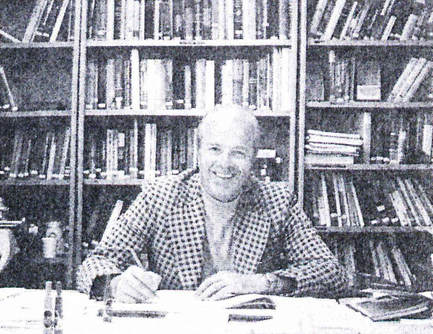A Brief History of the IP&T Department
|
From the beginning, the Instructional Psychology and Technology (IP&T) program has been a leader in producing cutting-edge ideas in both education and technology. It was born during a period where businesses, military, and higher education leaders were becoming aware of the power of new technologies to extend the reach of instructors. At that time, the fields of instructional design and evaluation were just forming.
The whole idea of an instructional design profession, I don’t think it occurred to anybody. Before that it was all media technicians . . . but now there was this group of people whose job was to design and develop instruction for technology use. The tools were not there, the supports, the lore, the literature . . . did not exist. Dean Darrel Monson, director of instructional development at BYU, supplied funding for M. David Merrill, formerly of Stanford, to form a non-academic Instructional Research and Development Department in 1967 to support faculty technology needs on campus. Not long after, Merrill and Harvey Black brought on additional faculty, including Ed Green, Grant Harrison, Cecil Clark, Adrian Van Mondfrans, and Paul Merrill to support an academic instructional psychology degree program within the Educational Psychology Department.
Then in 1971, Vic Bunderson and many members of the computer-assisted instruction lab at the University of Texas at Austin moved to BYU in order to work on the National Science Foundation-funded TICCIT project. The TICCIT project led to the development of practical design theories for instruction and computer science that demonstrated how the two fields could cooperate to accomplish something greater (select here to read Andy Gibbons’s article on the TICCIT project, published in the International Journal of Designs for Learning). The next decade saw a growing relationship between computer science and educational psychology as competitive universities nationwide discovered how the two fields could work together effectively.
As the department grew, many faculty who had previously studied education at BYU returned to work in the McKay Institute, eventually joining the department’s faculty, including David Williams, Dillon Inouye, Richard Sudweeks, and Russell Osguthorpe.
The Department Grows and Contributes
During the late 1980s, a number of cost-saving changes resulted in the combination, reconfiguration, abolition, and reconstitution of the department. The department’s survival through this turbulent period demonstrates that many at BYU felt the department contributed in valuable ways to fulfilling the educational mission of BYU. Paul F. Merrill, who became the department chair in 1986, led the department through this turbulent period and oversaw the department’s reestablishment within the McKay School of Education.
Despite the changes of the time, BYU faculty members continued to pioneer advances in many areas, including videodisc technology, evaluation studies, instructional design methods, tutored reading in Spanish, and computer adaptive testing. Expansion of Department Influence in the Profession
In 1997, the faculty gave the department its current name, Instructional Psychology and Technology, heralding a move to expand the department’s interests and influence in many related fields. New young faculty joined the IP&T program with a broad variety of interests, including Laurie Nelson, Steve Yanchar, and Charles Graham.
Russell Osguthorpe served as department chair from 2001 to 2003, at which point he was called as a mission president in Rapid City, South Dakota. Andrew Gibbons (seen below) joined the faculty as department chair in 2003, serving in that capacity until 2014.
Additional faculty joined the department during this period, including Stephanie Allen, Peter Rich, Richard West, David Wiley, Randy Davies, Ross Larsen, and Royce Kimmons.
During this period, the IP&T program emphasized its services to the McKay School of Education and strengthened its ties to the school with faculty participating in the Center for the Improvement of Teacher Education and Support (CITES). The faculty also expanded their contribution to the profession in scholarship and leadership, contributing multiple chapters to key handbooks in the field such as the Handbook of Educational Communications and Technology, the Handbook of Distance Education, and the Handbook of Blended Learning (edited by faculty member Charles Graham). The Educational Technology and Media Yearbook named the department one of the top 10 most productive departments in the world for multiple years, based on its publications in the leading journals. The department also began hosting the Professors of Instructional Design and Technology (PIDT) conference on a rotating basis and serving on the executive board for the Association for Educational Communications Technology (AECT). Current Directions
The current department chair, Charles Graham, brings to the department valuable experience as a former associate dean of the McKay School of Education. The department continues to build upon its multi-disciplinary foundation by offering emphasis in design and development, research, second-language acquisition, evaluation, assessment, and measurement. Alumni have gone on to productive careers in academia, government, K–12 education, corporate training, LDS design and development, educational startups, and nonprofits. Chris Randall of the MTC created this video explaining their relationship with the IP&T program.
|



